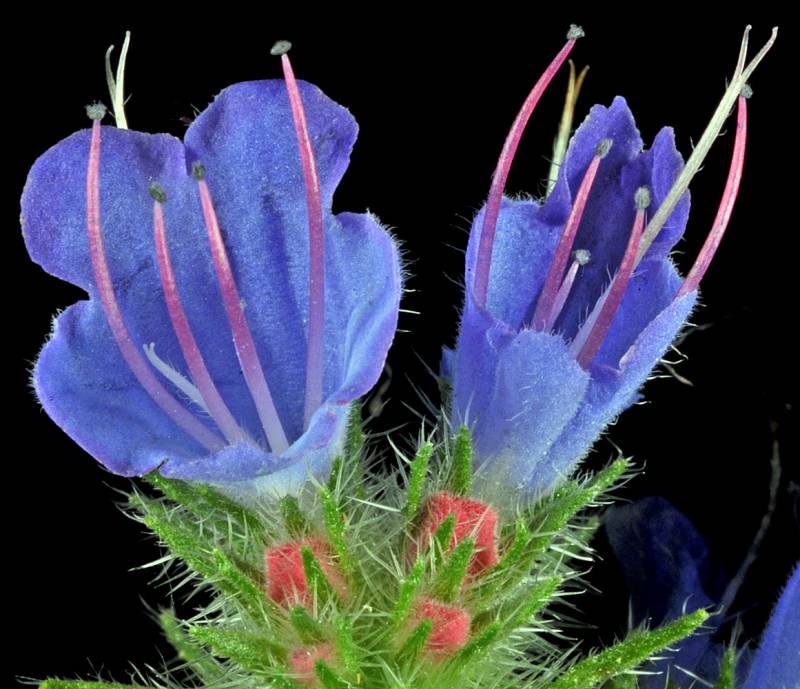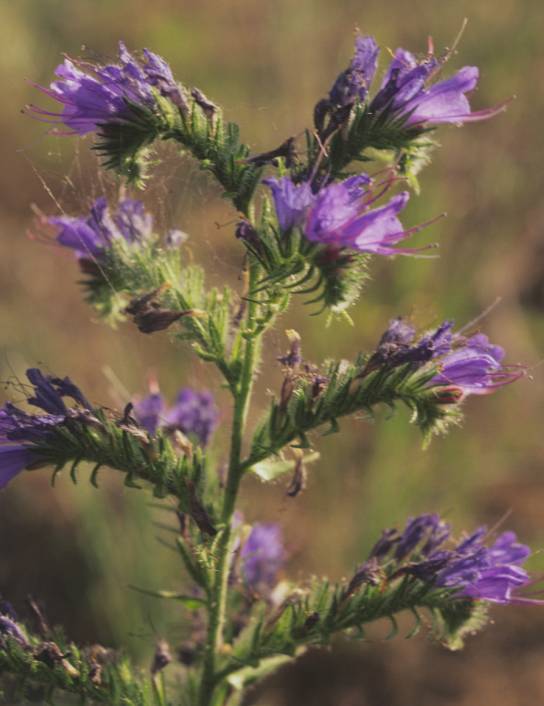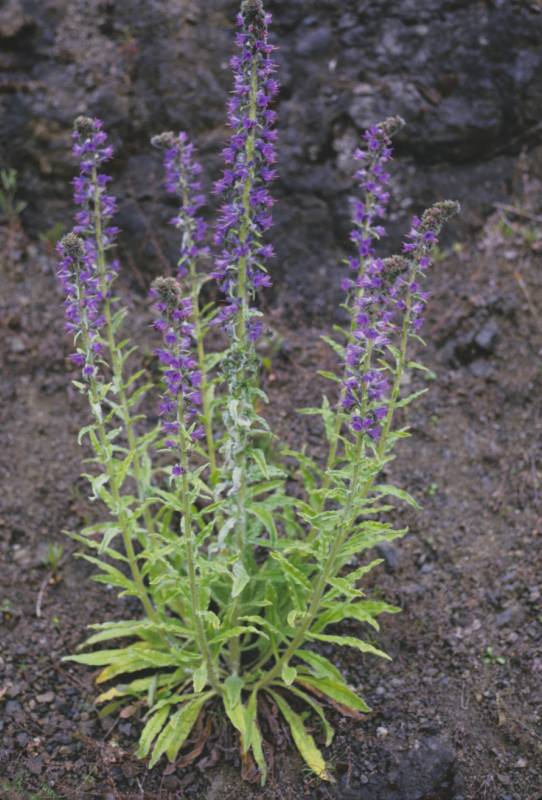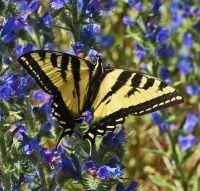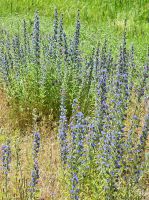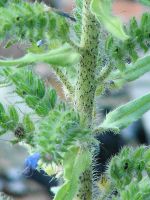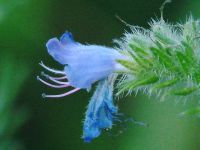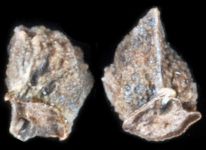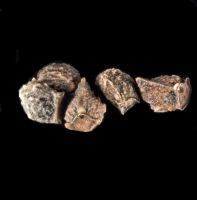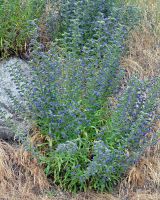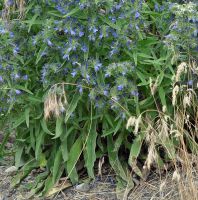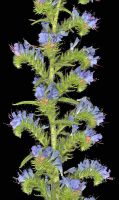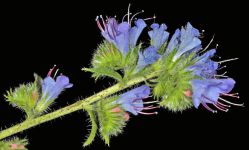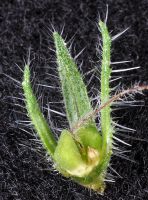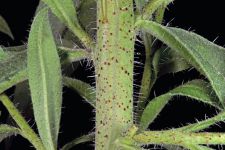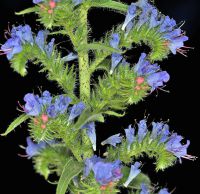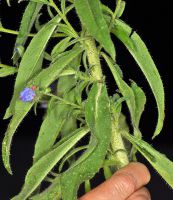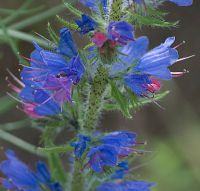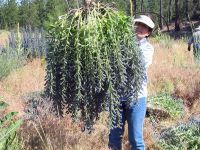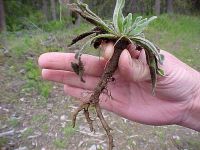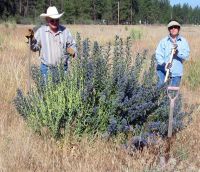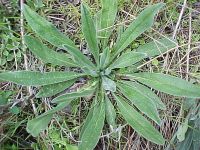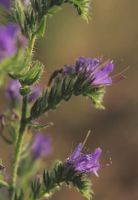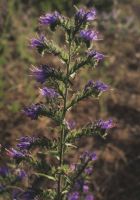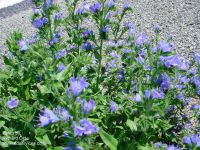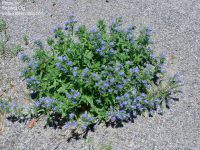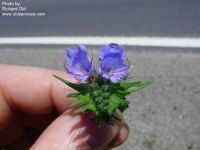Distribution: Occurring in scattered locations on both sides of the Cascades crest in Washington; Alaska to Oregon, east across most of North America to the Atlantic Coast.
Habitat: Roadsides, fields, ditches, wastelots, and other disturbed open areas.
Flowers: June-August
Origin: Introduced from Mediterranean region
Growth Duration: Annual, Biennial, Perennial
Conservation Status: Not of concern
Pollination: Bees, flies
Erect biennial from a taproot, the stems 3-8 dm. tall, rough-puberulent and spreading-bristly.
Basal leaves oblanceolate, petiolate, 6-25 cm. long and 0.5-3 cm. wide; cauline leaves progressively smaller, becoming sessile.
Inflorescence an elongate aggregate of numerous, short, coiled false-racemes; calyx deeply cleft; corolla bright blue, 12-20 mm. long, funnel-shaped, the 5 lobes unequal; 4 filaments long-exerted, the fifth much shorter; style exerted, hairy.
Nutlets 4, roughened, attached by the base.
Publication: Sp. Pl. 1: 139. 1753.
PNW Herbaria: Specimen records of Echium vulgare in the Consortium of Pacific Northwest Herbaria database
WA Flora Checklist: Echium vulgare checklist entry
OregonFlora: Echium vulgare information
E-Flora BC: Echium vulgare atlas page
CalPhotos: Echium vulgare photos

